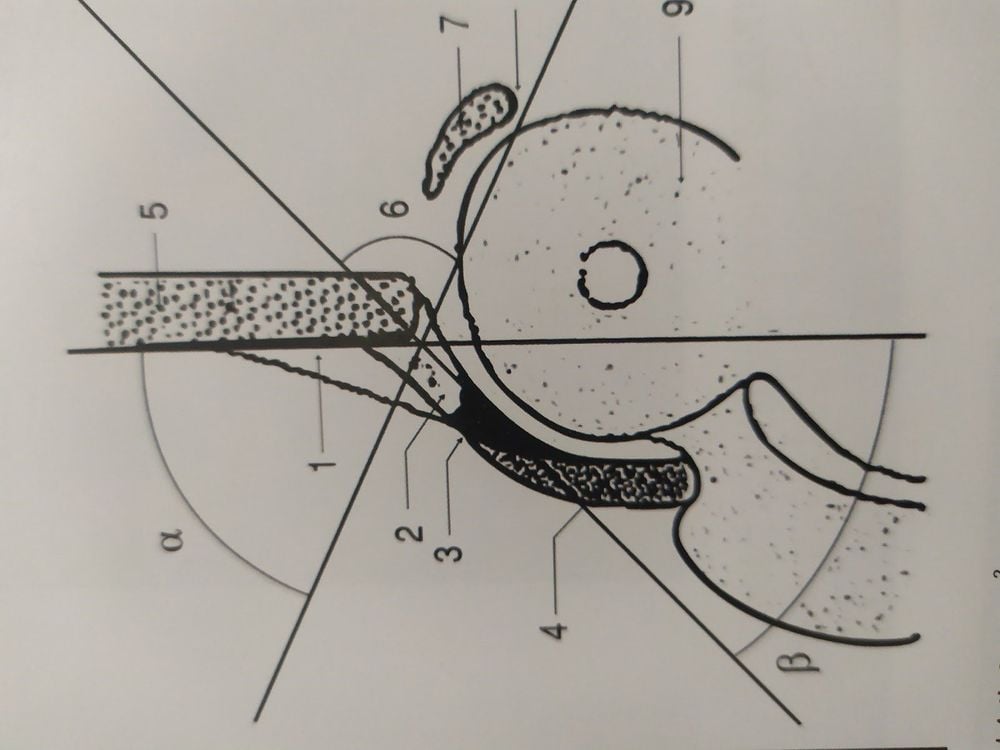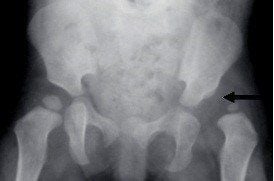This is an automatically translated article.
The article was professionally consulted by Doctor Trinh Le Hong Minh - Radiologist - Radiology Department - Vinmec Central Park International General Hospital.Hip ultrasound is used to diagnose diseases in the joints and soft tissues around the joints for both adults and children. Especially in infants, hip ultrasound helps to detect hip dislocation and acetabular hypoplasia early. Thereby providing effective early treatment for children.
1. What is a hip ultrasound?
Hip ultrasonography is a method of using high-frequency ultrasound waves from 7MHz or higher to examine lesions around the hip joint and at the hip joint.For newborns, hip ultrasound has great significance in diagnosing congenital hip dislocation and acetabular hypoplasia. But if the child is over 6 months old, the examination is difficult due to ossification of the hip joint. For adults, ultrasound is mainly used to detect muscle and ligament pathology, cortical surface hip effusion and guide aspiration. However, in adults, ultrasound examination of joints is limited because of the deep location of the joints, especially in obese patients with difficult ultrasound examination. In general, hip ultrasound is simple, non-invasive, painless, low cost, but brings good diagnostic results, especially early detection of pathological conditions in the hip joint of infants. birth, helping children get early treatment to avoid causing hip malformations later.

Siêu khớp háng là phương pháp sử dụng sóng siêu âm có tần số cao từ 7MHz trở lên để thăm khám tổn thương quanh khớp hàng và tại khớp háng
2. Indications for ultrasound of the hip joint
For infants, ultrasound of the hip is indicated when there are signs:There is a cry when moving the hip. Observe two asymmetrical hip joints. Family history of siblings with congenital hip dislocation, breech birth, other deformities such as foot deformity... Poor footwork. For adults, it is indicated when
Hip pain due to injury or not due to injury. Limit movement of the hip joint. Suspected infection in the hip joint.

Bác sĩ có thể chỉ định siêu âm khớp háng trong trường hợp người bệnh hạn chế vận động khớp háng
3. Steps to conduct hip ultrasound
Preparation of Means: Ultrasound machine with flat transducer frequency from 7 to 12MHz, specialized ultrasonic gel. Performers: Radiologists, technicians. Patient: In general, no special preparation is required, specific instructions on how to coordinate ultrasound. Ultrasound steps Position: The patient lies on his back, legs closed and some other positions to examine in case of disease Apply specialized ultrasound gel on the examination site, use the ultrasound probe to cut the cross-sections and along the hip joint depending on the purpose of examination based on clinical signs. Use doppler ultrasound to assess vascular status at the lesion to assess angiogenesis. Evaluation of the results: After recording the image of the hip joint on the machine, the doctor evaluates and describes the damage if any. Provide a diagnosis or guide the diagnosis, ordering additional tests if necessary.4. Detecting pathology thanks to hip ultrasound
Hip ultrasound helps to detect the following pathologies:4.1 Transient hip bursitis Transient hip bursitis is an acute transient condition, most common in children aged 3 to 10 years old. Usually appears after the child has a respiratory infection, finds the child has difficulty walking, limited hip mobility and pain. On ultrasound, the hip effusion is a hypoechoic mass. Symptoms usually disappear after about 2 weeks, to distinguish them from other diseases such as septic arthritis.
4.2 Congenital hip dislocation and acetabular hypoplasia in infants Determining hip dislocation in children needs to determine the alpha angle and Beta angle.

Góc alpha và góc Beta trong việc xác định trật khớp háng ở trẻ
Infective hip arthritis: On ultrasound, hip effusion is seen, purulent fluid is hyperechoic or non-homogeneous. Hypertrophic Bursitis: When you see joint effusion, the fluid is often hypoechoic, in addition, there is a thickened synovial membrane, synovial calcification, and increased angiogenesis on doppler ultrasound. . Peripheral cartilage cyst: The image of a negative drum mass is seen at the border cartilage position, with a clear border. Tendon tears: Common after trauma, tendons are damaged intermittently, accompanied by localized fluid around the injury site. In addition, when there is effusion of the hip joint, ultrasound helps to locate when aspirating fluid and avoid damage to other parts around the hip.
Hip ultrasound is a simple method to help detect hip disease. Especially for infants at high risk of congenital hip dislocation, it is recommended to perform an early hip ultrasound to diagnose the disease early, so that the child can be treated conservatively.
Currently, the Diagnostic Imaging Department of Vinmec International General Hospital With the world's leading modern, synchronous and advanced equipment such as: Magnetom Skyra 3 Tesla Magnetic Resonator of SIEMEN (Germany) , Aquilion One 640-class computed tomography machine of TOSHIBA (Japan), 16-layer computed tomography machine of GE (USA), modern digital X-ray machines (GE), room X-ray of the operating room,....and a team of highly qualified and experienced doctors-technologists, the radiology department can perform many diverse and specialized techniques, supporting for Clinicians quickly and accurately diagnose the disease, helping to monitor the disease during and after treatment.
Please dial HOTLINE for more information or register for an appointment HERE. Download MyVinmec app to make appointments faster and to manage your bookings easily.













